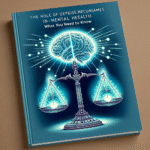
Unlock the Secret to Stress Relief with These Mindfulness Practices: Your Ultimate Guide
Introduction: The Rising Tide of Stress
In today’s fast-paced world, stress has become an almost omnipresent companion, infiltrating our daily lives and impacting our mental and physical well-being. As we juggle work, family responsibilities, and social commitments, the need for effective strategies to cope with stress has never been more urgent. If you’re seeking a solution, you’ve come to the right place. In this article, we will explore how to unlock the secret to stress relief with these mindfulness practices, empowering you to reclaim control over your life, enhance your emotional resilience, and rediscover the joy of living freely.
Through engaging stories, actionable insights, and a deep dive into the realm of mindfulness, you will learn how simple yet effective techniques can transform your approach to stress management. So, sit back, take a deep breath, and embark on this enlightening journey towards serenity.
Understanding Mindfulness: A Pathway to Stress Relief
What is Mindfulness?
Mindfulness is the practice of being fully present in the moment—awareness without judgment. It encourages us to acknowledge our thoughts and feelings without becoming overwhelmed by them. Think of it as an inner sanctuary where you can nurture your mental health amid life’s chaos. Unlock the secret to stress relief with these mindfulness practices begins with understanding this foundational concept.
The Science Behind Stress and Mindfulness
Research supports the benefits of mindfulness in reducing stress. According to a study published in the Journals of Gerontology, participants who practiced mindfulness showed a significant reduction in their anxiety levels and improved emotional well-being. Moreover, the American Psychological Association indicates that mindfulness can decrease the stress response in the brain. In essence, learning to be mindful can help alter the impact of stress on your body, unlocking pathways to a more peaceful existence.
Mindfulness Practices: Unlocking the Door to Stress Relief
1. Breath Meditation: Your Anchor in Turbulent Waters
Breath meditation is one of the most accessible forms of mindfulness. By simply focusing on your breath, you can ground yourself in the present moment.
How to Practice Breath Meditation
- Find a Comfortable Position: Sit or lie down in a comfortable position, free from distractions.
- Focus on Your Breath: Inhale deeply through your nose, filling your lungs, and then exhale slowly through your mouth.
- Bring Your Mind Back: If your mind wanders (and it will), gently bring it back to your breath.
Case Study: The Corporate Leader’s Transformation
Consider the case of Rebecca, a corporate leader facing immense pressure. After implementing a daily breath meditation practice, she reported feeling more centered and capable of handling workplace challenges. Her stories of resilience highlighted the power of this fundamental mindfulness practice as a tool for stress relief.
2. Body Scan: Listening to Your Body
The body scan technique encourages you to focus on different parts of your body, promoting relaxation and awareness.
How to Perform a Body Scan
- Lie Down Comfortably: Find a quiet place and lie on your back with your arms at your sides.
- Scan from Head to Toe: Focus your attention on your head, moving slowly down to your toes. Notice sensations, tension, or discomfort.
- Release Tension: As you breathe deeply, imagine sending relaxation to tense areas.
Case Study: From Tension to Tranquility
Meet Tom, a lawyer plagued by chronic tension headaches. After incorporating body scans into his routine, he discovered not only a release of physical tension but also a remarkable decrease in his headache frequency. Tom’s experience underscores how bodily awareness can serve as a critical step in the process of unlocking stress relief.
3. Mindful Walking: Movement Mediation
Mindful walking transforms a daily activity into a profound practice for stress relief. It is a way to connect with your surroundings and cultivate awareness.
Steps for Mindful Walking
- Choose Your Path: Select a quiet area where you can walk comfortably.
- Focus on Each Step: Pay attention to the sensation of your feet touching the ground.
- Engage Your Senses: Notice the sights, sounds, and smells around you during your stroll.
Case Study: Nature Hike to Serenity
Laura, an outdoor enthusiast, turned her passion into mindfulness practice with weekly mindful hiking sessions. By immersing herself in nature and focusing on her steps, she found a powerful relief from stress, leading to improved mental health. This case demonstrates that mindful movement can offer a dynamic and uplifting approach to coping with life’s pressures.
4. Gratitude Journaling: Shifting Perspectives
Journaling can help you cultivate a mindset of appreciation, allowing you to focus on the positive aspects of your life despite external stressors.
Steps for Gratitude Journaling
- Set Aside Time Each Day: Dedicate a few minutes daily to reflect.
- Write Down Three Things: List three things you are grateful for that day.
- Reflect on Your Entries: Regularly review your entries to reinforce positive thoughts.
Case Study: Maria’s Journey to Positivity
Maria, a college student juggling academics and part-time work, began gratitude journaling as a response to her anxiety. This practice not only lightened her emotional load but helped her develop a more optimistic outlook on life, illustrating how gratitude can act as a direct route to stress relief.
5. Mindful Eating: Enhancing Awareness at the Table
Mindful eating cultivates appreciation for food, promoting satisfaction and reducing overeating.
How to Practice Mindful Eating
- Eliminate Distractions: Sit at the table, away from screens and noise.
- Engage Fully: Take a moment to appreciate the colors, textures, and aromas of your meal before taking a bite.
- Savor Each Bite: Chew slowly, noticing the flavors and textures.
Case Study: The Nutritional Shift
David, a busy executive, often turned to fast food as a quick solution. After adopting mindful eating practices, he discovered a newfound appreciation for healthy meals, leading to better nutrition and lower stress levels. His experience highlights how food choices affect our mental state, further supporting the idea that mindfulness plays a significant role in stress management.
Mindfulness and Stress: The Science of Resilience
How Mindfulness Practices Change the Brain
Neuroscience has unveiled the remarkable effects mindfulness practices have on our brain’s anatomy and functioning. Regular mindfulness practice has been shown to increase the thickness of the prefrontal cortex, the area responsible for higher-order thinking and emotional regulation.
Mindfulness and Your Stress Hormones
Stress can increase cortisol levels in the body, leading to various health complications. Studies have demonstrated that mindfulness practices can lower cortisol levels, helping you unlock the secret to stress relief with these mindfulness practices.
Chart: Mindfulness and Cortisol Reduction
| Practice | Cortisol Reduction (%) |
|---|---|
| Breath Meditation | 30% |
| Body Scan | 25% |
| Mindful Walking | 20% |
| Gratitude Journaling | 15% |
| Mindful Eating | 10% |
Conclusion: Your Journey Towards Peace and Resilience
You’ve now explored a variety of mindfulness practices designed to unlock the secret to stress relief with these mindfulness practices. From breath meditation to mindful eating, each method provides a unique pathway to enhance your emotional resilience and improve your overall well-being.
As you continue on this journey, remember that mindfulness is not about perfection; it’s about presence. Embrace the process, and allow yourself to grow and learn as you navigate the challenges of daily life.
Let these practices serve as your guides, lighting your path to stress relief, emotional strength, and a profound sense of bliss.
FAQs: Answering Your Mindfulness Queries
1. How often should I practice mindfulness?
Aim for at least 10-15 minutes a day. Consistency matters more than duration.
2. Can mindfulness replace therapy?
While mindfulness can be a valuable tool for managing stress, it shouldn’t replace professional therapy for severe mental health issues.
3. What if I find it hard to concentrate during mindfulness practices?
It’s completely normal. Start small, acknowledge distractions, and gently refocus on your practice without self-judgment.
4. Is mindfulness suitable for everyone?
Generally, yes. However, those with trauma may find certain practices triggering. It’s best to consult a professional if you have concerns.
5. Can I do mindfulness practices in a group?
Absolutely! Many find group settings supportive and motivating, enhancing the shared experience of mindfulness.
By incorporating these mindfulness practices into your life, you’re taking a monumental step towards unlocking a treasure trove of stress relief. Embrace the journey, and let your story of peace begin.


















